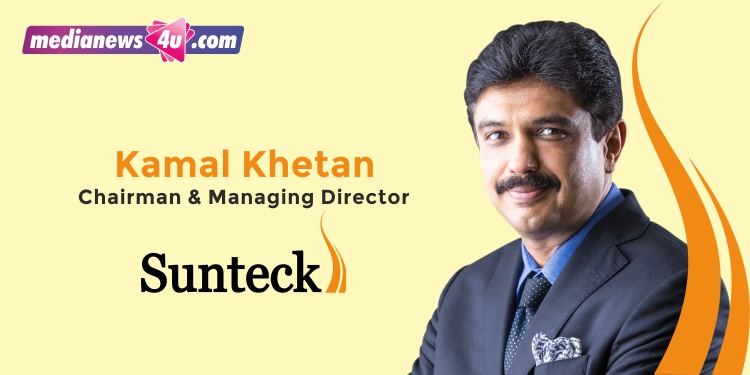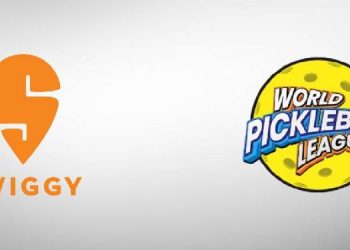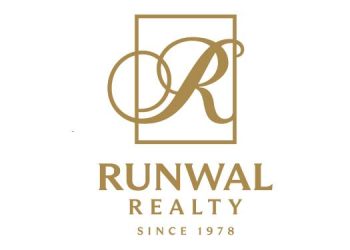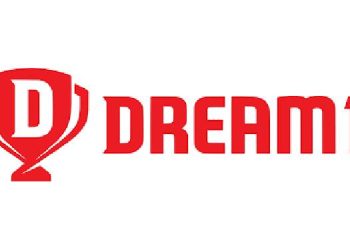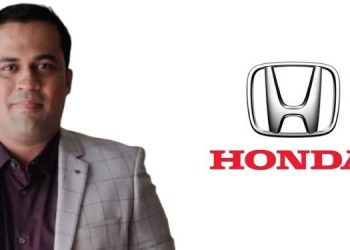From running business centres, what was the trigger to launch Sunteck Realty with an uber-luxury residential project? And how did it grow from there?
We wanted to do something different and get into the proper real estate segment. Since we were already running business centres in BKC (Bandra Kurla Complex), we saw a huge potential for residential and that too luxury residential in BKC, allowing ‘Walk to Work’. We felt that it would do really well.
We were very clear that we should create something luxurious, so that we can get the who’s who, CEOs and CXOs of the corporate world, to stay there. Among the corporate leaders who stay in our uber luxury developments at BKC (which is already out in the public domain) are Mr. Gautam Adani and Mr. Uday Kotak.
Sunteck Signature Island was our first development which marked our entry into the residential segment in real estate and we started our journey as a luxury real estate developer. We became very successful as the project was a super hit. The designing, the planning and everything was developed in keeping with the ‘uber luxury’ positioning. That’s how we could get the people at the top of the corporate world to buy the properties.
To grow the company further, you can’t be in just one segment. We had started from the top of the pyramid, and to grow further we obviously wanted to extend towards the bottom to cover all the segments. But we wanted to go step by step and not rush into it. Gradually, we have entered one segment below, one after another, with a differentiated sub-brand so that we don’t dilute the luxury quotient of Sunteck.
I’ll take the example of JW Marriott. So, you have JW Marriott, then you have Marriott, then Courtyard by Marriott, then Fairfield by Marriott, but all are Marriott brands bringing luxury to every segment – five star, four star, three star. And they all come with a premium of being Marriott. Similarly, we created distinguished brands in every segment and positioned ourselves as luxury in every segment to command the premium.
So are there different brands for different segments under Sunteck?
We have differentiated our projects across segments under six brands. Our first project was under the brand ‘Signature’ for uber-luxury residences. This was followed by the brand ‘Signia’ for ultra-luxury residences, in which we have Signia Pearl and Signia Isles at BKC. We have successfully done multiple projects in this segment where we were able to command a premium as we could deliver luxury.
Then we got into a segment that is one notch below, with a ticket size of Rs.1 to 4 crore. In this segment, we had to play with the volume – one standalone building wouldn’t be sufficient to cover the overheads. For these lower segments, we created differentiated brands. Like our project in Goregaon Sunteck City – where we created the ‘City’ brand. This format has a minimum of 10 to 15 acres of mixed-use development. Similarly, Sunteck Park at Mira Road, for mixed-use premium luxury residences.
Going forward, we entered a category another notch lower and created the ‘World’ brand. We launched Sunteck West World in Naigaon, followed by Sunteck Max World, and then Sunteck One World. We also introduced ‘Marquee Luxury Destination’ in our portfolio with the launch of Sunteck Beach Residences.
You were very clear with what you wanted, that there was a gap in the premium realty space. Is that right?
Yes. In the premium space there has to be branded residences, which one can create with a better luxury quotient, which every segment of our developments have. At Naigaon, local developers were selling at Rs. 4,000 to 5,000 per s.ft., but the development does not provide high-quality amenities and enhanced lifestyle. The local developer does not have resources to deliver good quality construction and large-scale development. Even in this segment, we have provided the best as we have in our other projects. There is no compromise on the high-quality amenities – such as one of the largest clubhouses of the extended western suburbs, sports arena like badminton court, squash court, swimming pool and so on. And superior construction quality including the likes of elevators, because safety is very important regardless of the monetary value of the apartment. We have provided similar brands of elevators like we have in our uber luxury developments at BKC – Kone, Otis or Thyssen.
Our strategy is to cover the bigger market – to get into every segment and provide luxury in every segment. Sunteck is a luxury brand. Whether it is uber luxury, premium luxury or aspirational luxury, across each segment we offer luxury which people aspire to live in.
The property that an average developer may sell at Rs. 5,000 per s.ft. in Naigaon, what would be Sunteck’s price?
Today we are selling at over Rs. 10,000 per s.ft. as compared to the prevailing market price of Rs.8,500 to 9,000 per s.ft., which is 10 to 15 pc premium in that segment. Obviously because of our quality, and the trust, people know that the product will be delivered. All of this gives us an edge and a premium pricing even in the segment that is very price sensitive.

You have singularly focused on Bombay. Is that right?
Yes, we are more focused on the Mumbai Metropolitan Region (MMR). Any development in other metro cities like Chennai, Hyderabad, Bengaluru or Kolkata, or Pune, their average selling price is not more than Rs.7,000 to 8,000 per s.ft., across segments. However, presently in Mumbai, you can sell at Rs.7,000 per s.ft. as well as at Rs.1,40,000 per s.ft. You will not find that in any other city.
Mumbai is such a robust market. I don’t think anybody with a strong presence in the MMR market needs to explore anywhere else as there is so much opportunity within. Most of the developers who are not in MMR want to enter MMR. Sunteck Realty has already established a competitive edge in this market so growing here first is what we are looking at. Unless and until MMR gets exhausted or saturated, I don’t think we want to explore anything else till the time we can keep growing at this pace.
Is the opportunity bigger at the affordable luxury end than at the luxury end?
The opportunity, going forward, is definitely in the volumes. As we all know, more than 90 pc of the population is in the middle-income group. I don’t think any company can become very big if you ignore this segment. When we are talking about ‘affordable’ in tier 2, 3, 4 cities, then it would be in the range of Rs.3,000 to Rs.5,000. However, when we are talking affordable in Mumbai, it is like Rs.10,000 per s.ft. minimum – like our least priced product at Naigaon, and it is more than Rs. 10,000 per s.ft.
Real estate marketing efforts still rely heavily on print and outdoor. What is the share of digital today?
Ten years back, it was zero spend on digital. Today at least 50 pc of our spends are on digital. Spends have increased in digital and it will continue to keep going up.
There is a view that for categories like real estate which are ‘high involvement’ and ‘high trust’, print has a very relevant role, even with the growth of digital.
That is just to create your brand awareness. It doesn’t give you leads. If you do one front page jacket in a newspaper, that says that you have arrived in the market with this product. Now, I think maximum traction comes from digital.
So, we have seen real estate brands also playing up on brand ambassadors and celebrities. Have you ever thought about that?
Till now we have never used any celebrities or any brand ambassador. I don’t think it makes much of a difference. But it is always a good option to explore in future. At the end of the day people want a product of good quality from a trusted brand. One can do better marketing than just putting a celebrity in there.
So, half your budgets go to digital, and you don’t spend on celebrities. Where does the rest go?
Besides, digital we spend on print and hoardings, and on some BTL activities.
We don’t need celebrities because there are corporate celebrities living in our developments. I always say our celebrity endorsers are our corporate buyers who have bought our apartments. Sports and Bollywood celebrities have also bought quite a few properties in my projects, but that is because of the product. We have never tried to approach them or given them some special discount.

At Sunteck City, you will find buyers that are from TV serials, OTT platforms or social media influencers. It means that in every category, if your product is good, you will find all types of customers from entrepreneurs to corporate professionals to film industry professionals. If your product is something differentiated, then there will be customers from every segment.
Is there a certain profile, customers of a certain mindset, who are willing to pay a premium, or is the market itself moving towards more reliable products in real estate?
That is very true. The market has consolidated a lot in the last couple of years due to various factors like RERA, demonetisation, GST, and then there was the NBFC crisis. Obviously, only the strong developers with a strong balance sheet could survive, others have become extinct. And now, whoever had bought earlier from some inferior developers have their money stuck. Once bitten, twice shy… people now don’t mind paying that premium, but they want to transact with only reliable developers because at the end of the day it’s hard-earned money and it’s a big amount of money invested to purchase a house.
Our first real estate development project was in 2007 in BKC, which was Signature Island. The market has grown for luxury projects in every segment. Today, people don’t mind paying a premium, but they want the best product. People don’t want to compromise on the quality and the product.
Tell us about your collaboration with Piramal and Kotak on the business end.
When you operate in this space, partnerships are almost intrinsic to the business. We started with one project with Piramal and we did almost seven to eight projects; two or three are still to start, and some are under execution. We look at the partnership for the long term.
Recently, we have created a platform with IFC – a member of the World Bank – and we will be looking at a long-term relationship going forward. This is the first stepping stone with them. We’ll continue to grow with them with this partnership for the platform we have announced for green urban housing.
Is that unique to Sunteck, the partnerships approach? Or is this normal for the industry?
We don’t like to take too much leverage as we don’t want to stress our balance sheet. And secondly, when you get a strong partner, you learn from each other and you can be like ‘one plus one is eleven’. And if two strong partners come together, it gives us better growth and better capability to fight the competition. You can deliver a better product.
The vision you started off with in 2007 – have you reached where you wanted to? Or is this part of the journey?
The day a person thinks that he has reached, he should retire. I am not retiring at least for the next 10 to 15 years. I think there is a lot of potential still there. We have grown significantly in the last 10 to 15 years and we are looking at exponential growth from here onwards.
We entered the real estate market in 2007 with our first project and in only two years, there was the Lehman crisis which came as a setback to the industry. Thereafter, in the last 13 to 14 years, we have only seen headwinds for real estate. That’s why most developers vanished. There were no tailwinds but Sunteck Realty grew under those circumstances.
This is the first real tailwind we are getting after commencing our journey in the real estate industry and we are poised to take full advantage of this. In the last two to three years we have seen significant development compared to the earlier years of the company. You will see this exponential growth in the coming years.
(First published by The Free Press Journal BrandSutra. Content powered by MediaNews4u.com. Feedback: [email protected])
(Full interview at freepressjournal.in/brandsutra)

